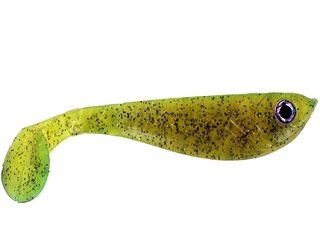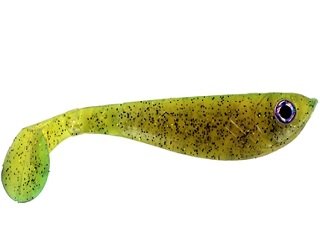 I love using swimbaits to catch big bass. Many anglers do. The rise in the popularity of swimbaits in recent years has caused numerous styles and new color patterns to be introduced into the market, which has broadened their appeal to fishermen. However, it is this popularity that also causes some frustration among anglers, as many are finding it hard to land fish with the conventional swimbait rig, due to a number of reasons. If your swimbait is bunching up or your hook just isn’t setting right, read on to learn a few swimbait tricks that might help you increase your catch rate.
I love using swimbaits to catch big bass. Many anglers do. The rise in the popularity of swimbaits in recent years has caused numerous styles and new color patterns to be introduced into the market, which has broadened their appeal to fishermen. However, it is this popularity that also causes some frustration among anglers, as many are finding it hard to land fish with the conventional swimbait rig, due to a number of reasons. If your swimbait is bunching up or your hook just isn’t setting right, read on to learn a few swimbait tricks that might help you increase your catch rate.
One way to ensure a solid hookset is to slice the belly of your swimbait along the length of the body. This will prevent the body of the bait from wadding up, especially near where the hook enters it and around the hook’s bend. Not only will this increase your catches, but it doesn’t impede the action either.
Hooking your swimbait through the nose is another great way to boost your chances of a solid hookset. Simply run the weighted hook through the nose of the bait, cast it out and swim it back to the boat. This tactic is great around boat docks, riprap points or even in open water, so don’t be afraid to use it.
You can also add a treble hook to your swimbait to increase your odds. To do this, take a swivel, attach a treble hook to one end with a split ring and slide the other end of the swivel over the weighted hook point before you put the single hook into the body of the swimbait. The treble hook will hang below the bait and will serve as insurance just in case the main hook doesn’t do the job.
After some use, swimbaits can get torn apart and start to slide on the shank and around the barb, causing you to miss fish. If this is the case, you can add some glue to the point where the hook shank enters the bait to ensure that it stays put.
Lastly, optimal tackle—specifically, the right rod—will help get the job done. A seven-foot stiff rod takes up line slack quickly, whereas shorter rods don’t move as much line, and the stiffer action helps the hook get through the lure and into the fish’s mouth. However, it’s best to not set the hook until the bass puts weight on the line. Set the hook too early and you may miss the fish.
Swimbaits do a great job of producing fish, but sometimes you need to employ a few tricks to increase your results on the water. If your swimbait action leaves a little something to be desired this season, try a few of the tips outlined above. You may be pleasantly surprised by the results.








